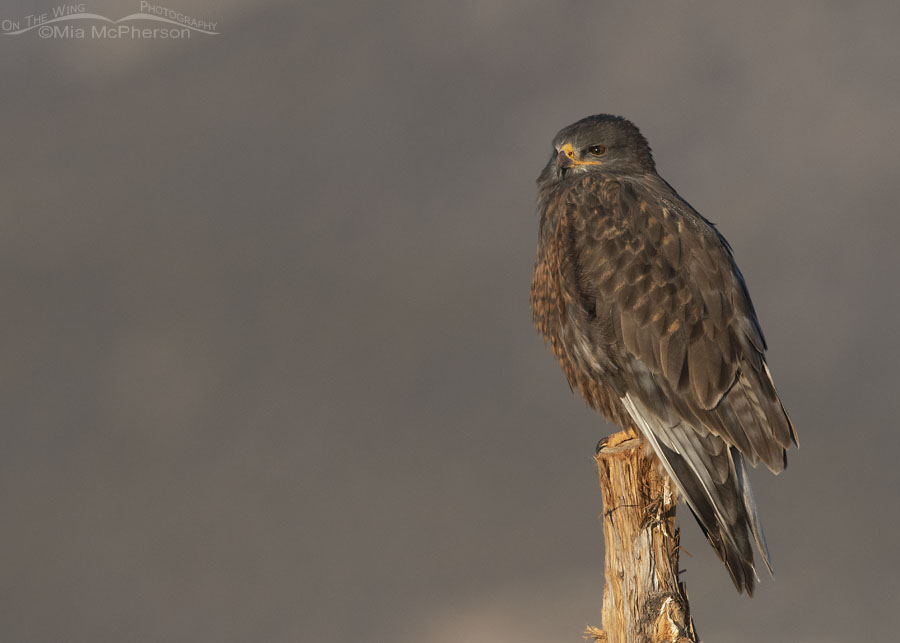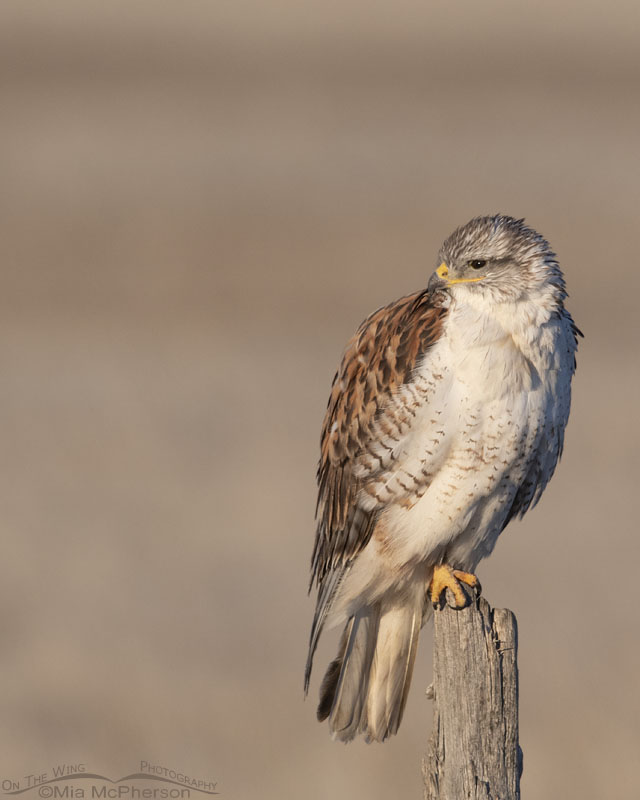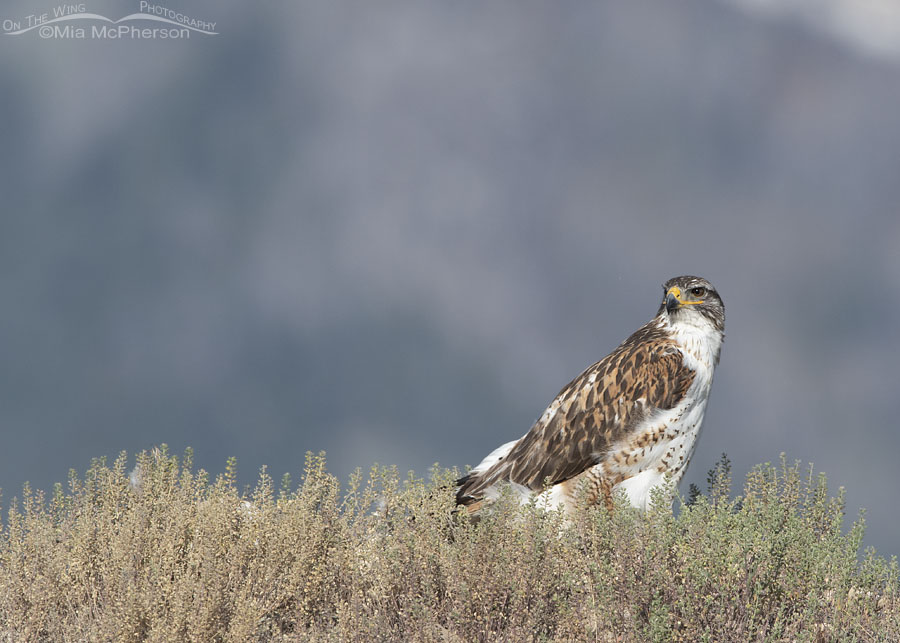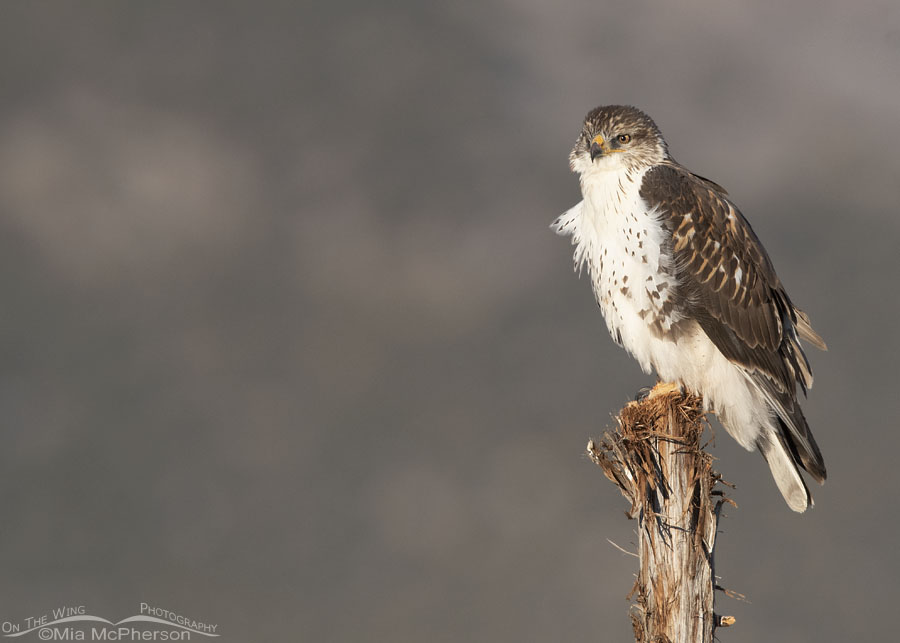 Dark morph Ferruginous Hawk surveying its habitat – Nikon D500, f7.1, 1/2000, ISO 800, -1.0 EV, Nikkor 500mm VR with 1.4x TC, natural light, not baited
Dark morph Ferruginous Hawk surveying its habitat – Nikon D500, f7.1, 1/2000, ISO 800, -1.0 EV, Nikkor 500mm VR with 1.4x TC, natural light, not baited
A few weeks ago I saw a local man on Facebook say it was great to see Ferruginous Hawks “back” in northern Utah and I have to admit that when I saw that statement I shook my head a bit because I know that if I am looking in the right places I can see Ferruginous Hawks here year round.
I found this dark morph Ferruginous Hawk on three separate trips to the West Desert last month and for all I know it may still be in that same general area, just because I didn’t see it on my last trip out there doesn’t mean the hawk has left the area. I think of it as a Schrödinger’s hawk, both there and not there.
The dark hawk could have been on the ground with prey and I could have missed spotting it because of that. Or it might have been tucked into a juniper or behind a hill and hidden from my sight.
The habitat I first found this Ferruginous Hawk in is open terrain and I know there are rabbits to be found in the area.
 eBird Bar Chart Utah
eBird Bar Chart Utah
I can understand saying Swainson’s or Rough-legged Hawks are “back” in Utah because Swainson’s Hawks are here for their breeding season and head south for the winter while Rough-legged Hawks spend part of the winter here and head to the far north to breed. Neither species stays in state year round.
 Adult light morph Ferruginous Hawk on the flats of Bear River MBR – Nikon D500, f7.1, 1/1600, ISO 640, Nikkor 500mm VR with 1.4x TC, natural light, not baited
Adult light morph Ferruginous Hawk on the flats of Bear River MBR – Nikon D500, f7.1, 1/1600, ISO 640, Nikkor 500mm VR with 1.4x TC, natural light, not baited
Ferruginous Hawks, on the other hand, can be found year round in the state. I’ve personally found this species every month of the year in northern Utah. A few times I’ve found them in habitats that seemed unusual but those were mostly during spring and fall migration.
 Light morph adult Ferruginous Hawk in summer – Nikon D500, f8, 1/1600, ISO 400, Nikkor 500mm VR with 1.4x TC, natural light, not baited
Light morph adult Ferruginous Hawk in summer – Nikon D500, f8, 1/1600, ISO 400, Nikkor 500mm VR with 1.4x TC, natural light, not baited
During the nesting season I look for Ferruginous Hawks in flat to rolling, open terrain with grasslands, sagebrush, and wide canyons with cliffs and rocky outcroppings or isolated juniper or pinyon pines which this species seeks for nesting. I also look for them near agricultural areas because of the availability of prey.
 Immature light morph Ferruginous Hawk in autumn – Nikon D500, f7.1, 1/1600, ISO 640, Nikkor 500mm VR with 1.4x TC, natural light, not baited
Immature light morph Ferruginous Hawk in autumn – Nikon D500, f7.1, 1/1600, ISO 640, Nikkor 500mm VR with 1.4x TC, natural light, not baited
During the winter into spring I often spot Ferruginous Hawks in wide open areas at low elevations perched on fences, power poles, hay bales, and water irrigation units.
Knowing what kind of habitat Ferruginous Hawks prefer during all four seasons here in northern Utah can increase the chances of finding them year round. It works for me.
Life is good.
Mia
Click here to see more of my Ferruginous Hawk photos plus facts and information about this species.





I especially like the lite morph photo!
Very interesting information about seasonal changes in habitat preferences. I never really considered it, but it totally makes sense. And gorgeous shots of the different morphs.
Beautiful series of photos! Thanks for the clear factual explanations. Very interesting.
I think you nailed it with ‘knowing what kind of habitat Ferruginous Hawks prefer during all four seasons’.
Without that knowledge you may well struggle to see them, and indeed think they are missing.
Very interesting, and beautiful images! When we lived in New Mexico we had a light morph fly right up to our large window-wall and swoop up over our roof. It was huge! An unforgettable event.
Beautiful photos, Mia